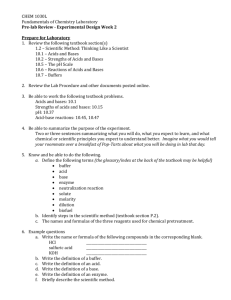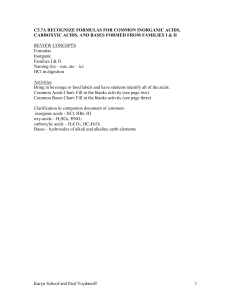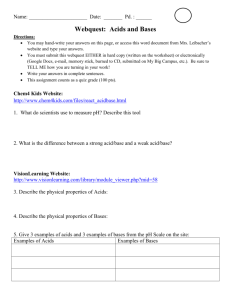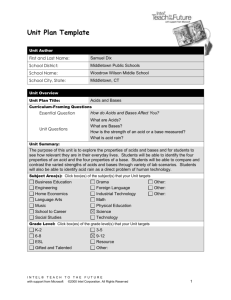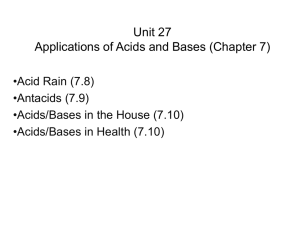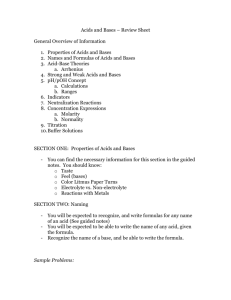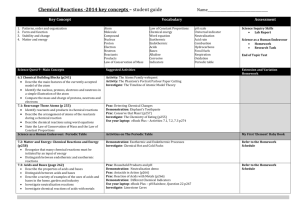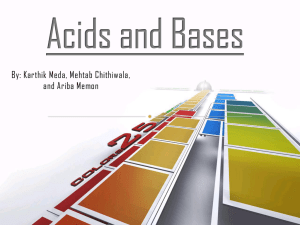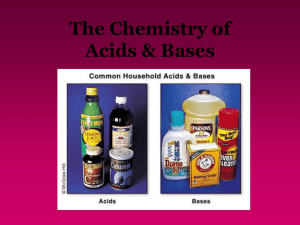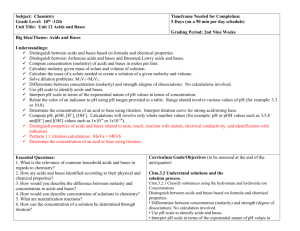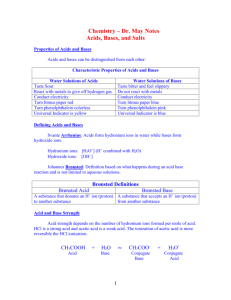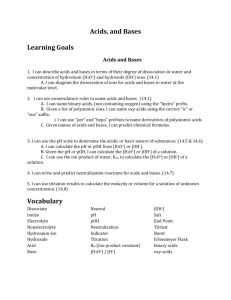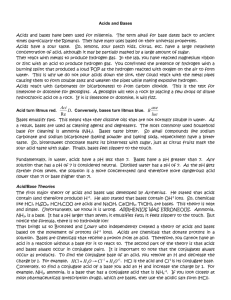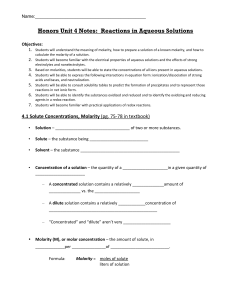Study Guide Chemistry 106/107 Test 3
advertisement
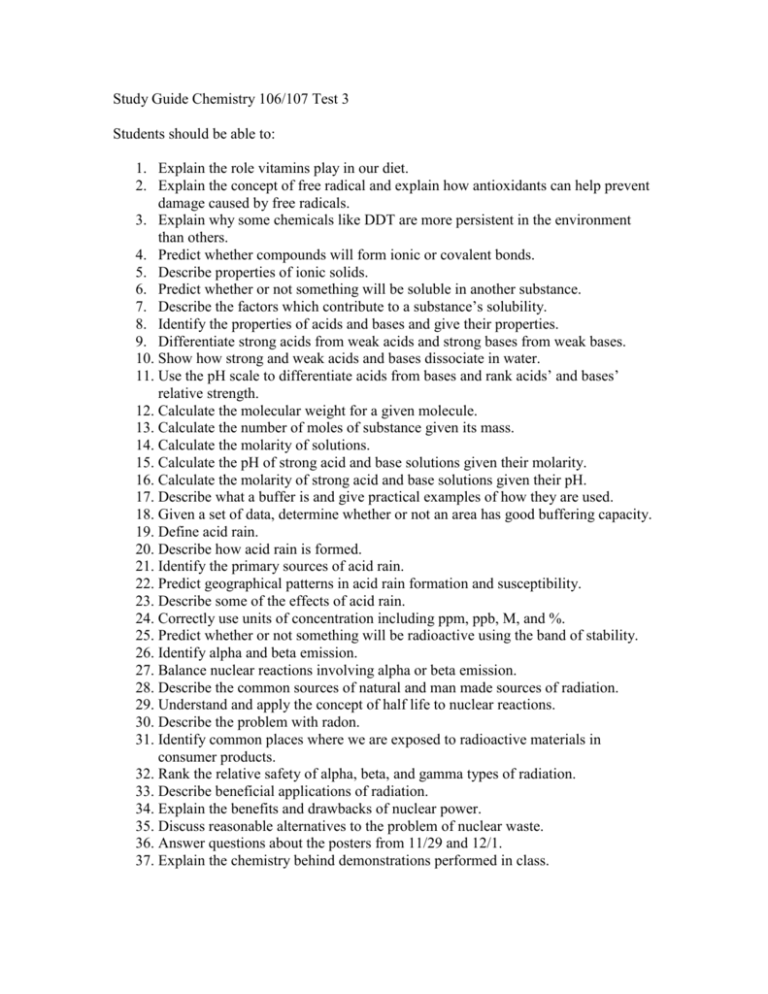
Study Guide Chemistry 106/107 Test 3 Students should be able to: 1. Explain the role vitamins play in our diet. 2. Explain the concept of free radical and explain how antioxidants can help prevent damage caused by free radicals. 3. Explain why some chemicals like DDT are more persistent in the environment than others. 4. Predict whether compounds will form ionic or covalent bonds. 5. Describe properties of ionic solids. 6. Predict whether or not something will be soluble in another substance. 7. Describe the factors which contribute to a substance’s solubility. 8. Identify the properties of acids and bases and give their properties. 9. Differentiate strong acids from weak acids and strong bases from weak bases. 10. Show how strong and weak acids and bases dissociate in water. 11. Use the pH scale to differentiate acids from bases and rank acids’ and bases’ relative strength. 12. Calculate the molecular weight for a given molecule. 13. Calculate the number of moles of substance given its mass. 14. Calculate the molarity of solutions. 15. Calculate the pH of strong acid and base solutions given their molarity. 16. Calculate the molarity of strong acid and base solutions given their pH. 17. Describe what a buffer is and give practical examples of how they are used. 18. Given a set of data, determine whether or not an area has good buffering capacity. 19. Define acid rain. 20. Describe how acid rain is formed. 21. Identify the primary sources of acid rain. 22. Predict geographical patterns in acid rain formation and susceptibility. 23. Describe some of the effects of acid rain. 24. Correctly use units of concentration including ppm, ppb, M, and %. 25. Predict whether or not something will be radioactive using the band of stability. 26. Identify alpha and beta emission. 27. Balance nuclear reactions involving alpha or beta emission. 28. Describe the common sources of natural and man made sources of radiation. 29. Understand and apply the concept of half life to nuclear reactions. 30. Describe the problem with radon. 31. Identify common places where we are exposed to radioactive materials in consumer products. 32. Rank the relative safety of alpha, beta, and gamma types of radiation. 33. Describe beneficial applications of radiation. 34. Explain the benefits and drawbacks of nuclear power. 35. Discuss reasonable alternatives to the problem of nuclear waste. 36. Answer questions about the posters from 11/29 and 12/1. 37. Explain the chemistry behind demonstrations performed in class.






